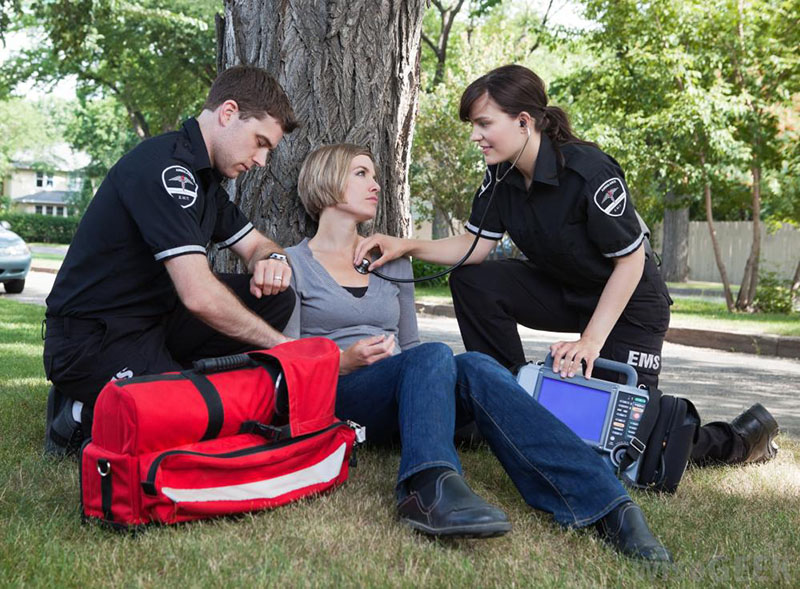Emergency medical services are a critical one, and a career in it is rewarding. It’s about helping people and providing life-saving medical care. If you’re considering being an Emergency Medical Technician (EMT) or even moving up into the highly sought-after position of a paramedic, you’re entering a profession that offers tremendous growth potential and a huge demand for highly skilled professionals. This article will guide you through the steps of becoming an EMT or paramedic, and will help you explore all the training options that are readily available.

Understanding the significance of EMTs & Paramedics
Emergency Medical Technicians, also known as paramedics or EMTs are the first responders in emergencies. They provide immediate care. They are trained to evaluate the health of patients, providing vital medical treatments, and transporting patients securely to medical facilities for further care. EMTs and paramedics play a crucial role in stabilizing patients in critical situations, deciding in split-seconds as well as providing caring care during times of distress.
Step 1: Becoming EMT
In order to become an EMT you’ll have to be able to complete a variety of education and training programs. They can vary based on the degree of certification you are aiming to obtain. There are three levels to EMT certification:
1. EMT-Basic (EMT-B) The EMT-B is the entry-level certification and needs between 100 and 150 hours of education. EMT-Bs are educated to provide basic medical services that includes CPR and bleeding control and basic airway management.
2. EMT-Intermediate: EMTI is a degree that requires additional training. The amount of training needed varies from state to another. In some states, this degree is paired with EMT-B. In other areas the courses can range from 200 to 400 hours, which includes advanced medical knowledge including intravenous therapy as well as additional skills.
3. EMT-Paramedic is the most advanced level of EMT certification. It requires intense training, which lasts from 1,000 and 1 800 hours. Paramedics are skilled in medical procedures like administering medication, reading EKGs, and directing airways.
Step 2: Requiring Paramedic Certification
You must pass your EMT B or EMT I degree before becoming a paramedic. Once you’ve completed that, it’s possible to take a paramedic course, which typically takes between one and two years to complete. Through the rigorous training, you’ll study the latest medical issues. In addition, you’ll acquire the knowledge and skills needed to manage difficult circumstances.
Learn more about EMT Training Options
You can select from a wide range of EMT courses, depending on the level of your certification. EMT training is generally offered by community colleges as well as medical trades schools that offer all certifications. These programs combine teaching in the classroom with hands-on experience as well as clinical and field settings.
Schools and universities provide EMT programs for the EMT/Paramedic Level, in case you’re seeking an in-depth and comprehensive EMT training that leads to the degree of a college. These programs offer a more extensive knowledge of emergency medical services, and offer you a broader perspective on medical decision-making and care for patients.
Step 4: Ensuring DSHS Approved EMS Training:
For aspiring EMTs and paramedics it’s crucial to ensure that the training program you choose to take is DSHS accredited. The Department of State Health Services (DSHS) DSHS accepts EMS Training Courses to ensure top quality education. By enrolling in a DSHS approved EMS training course, you can rest assured that you are receiving top-notch instruction and meeting the necessary requirements for certification.
Paramedics and EMTs are highly respected careers. EMTs paramedics, EMTs and other first responders play a vital function in providing medical attention and saving lives during emergencies. If you’re aspiring EMTs or paramedics, to get started on this life-saving adventure they must successfully complete the necessary education and training programs. People can choose from a variety of EMT programs, depending on the level of certification they want to attain. They include medical schools, community colleges as well as university-level courses.
While you are considering choices for training, it is essential to make sure that the EMS training course is DSHS accredited. This way, you can be confident that you are receiving quality training that is in line with the requirements to obtain EMT as well as paramedic certificates.
The demand for emergency medical professionals is increasing. Entering the field of EMS could provide you with many career opportunities as well being a chance to make a an enormous impact on others’ lives. If you begin with an EMT-Basic certification or want to become a paramedic your commitment to providing vital care will be rewarded with an enjoyable and fulfilling job in emergency medical care.